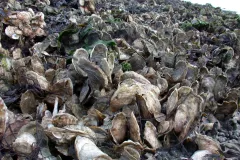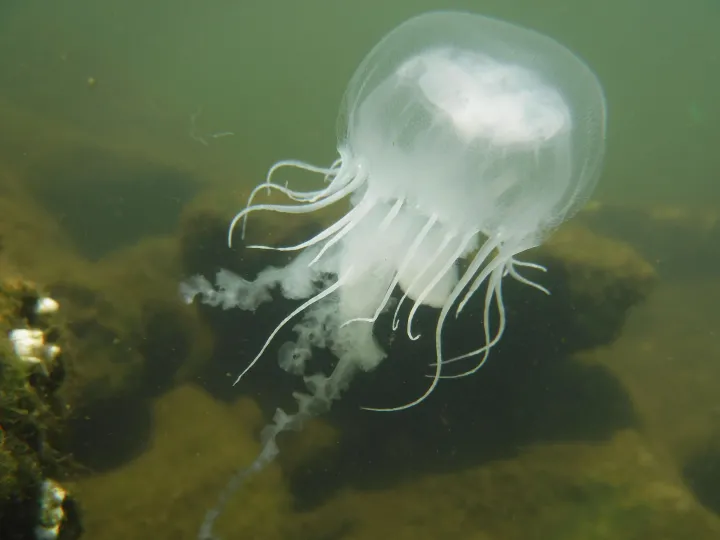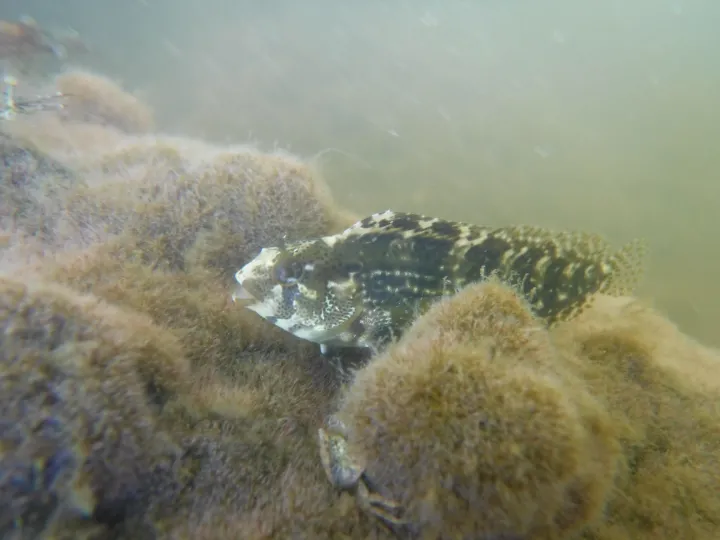Oysters as a Keystone Species in the Chesapeake Bay

Long ago, beneath the waters of the Chesapeake Bay, there existed enormous, thriving oyster reefs. Imagine skyscrapers underwater, built entirely of oysters stacked one atop another. These oyster reefs were bustling underwater cities, filled with countless creatures, each with its own special role. Tiny fish called naked gobies hid safely among the reef's cracks, while larger hunters like sunfish cruised above, searching for their next meal. Mussels, shrimp, jellyfish, crabs, and even sea anemones found shelter and food in these vibrant underwater neighborhoods. Birds, snakes, and turtles visited too, diving down to capture their meals.
Today, however, these underwater cities have almost disappeared. Most oysters have vanished from the Chesapeake Bay.
The Chesapeake Bay, the largest estuary in the United States, was once dominated by eastern oysters, scientifically known as Crassostrea virginica. These oysters were more than just residents—they were the builders and caretakers of the underwater environment, much like coral reefs or mangrove forests. They not only provided homes for marine life but also protected the shoreline by slowing waves and filtering the water. Amazingly, a single oyster could clean up to 50 gallons of water a day!
Humans have long valued oysters too. Native Americans harvested oysters sustainably for thousands of years, leaving behind piles of shells that archaeologists still find today. However, when European settlers arrived, everything changed. They brought new fishing technologies like dredging and tonging, allowing oysters to be harvested faster and in greater numbers. Oyster fishing quickly grew into a major industry, filling ships with oysters and feeding canneries all around the Chesapeake. But this booming industry had consequences.
By the late 1800s, overfishing had greatly reduced oyster populations, and the heavy equipment destroyed the delicate reef structures. Without their sturdy homes, oysters became vulnerable to disease, pollution, and the effects of coastal development. Today, the oyster population in the Chesapeake Bay is only about 1-2% of what it once was.
Yet, hope is alive. Communities, scientists, governments, and non-profit groups are working hard to rebuild these reefs. They're creating new homes for baby oysters using concrete structures called "reef balls" and recycling oyster shells from local restaurants. Urban waterways like Baltimore Harbor have become perfect places for restoration because they allow local communities to see and participate directly in these projects.
Despite past pollution and industrial activity, Baltimore Harbor is slowly coming back to life. Small fish like naked gobies, American eels, northern pipefish, and striped blennies have returned, finding new homes in the rebuilt reefs. Unique creatures like the skilletfish, with its frying pan-shaped body and suction-cup belly, cling to oysters and concrete alike. Colorful fish like the mummichog and pumpkinseed sunfish forage among the reefs, while larger predators like striped bass, white perch, and blue crabs have also returned.
Invertebrates, the tiny animals without backbones, are also thriving. Grass shrimp dart around marina pilings, white-fingered mud crabs squeeze into tiny crevices, and ghost anemones cling to oyster shells and hard surfaces, their tentacles waving in the currents. Even mussels, bryozoans, and barnacles help oysters filter and clean the water, doubling the reefs' environmental benefits.
Seeing these animals return brings optimism. Their presence shows that, with care and effort, nature can heal. The revival of Baltimore Harbor proves that rebuilding oyster reefs and protecting keystone species is not only possible—it is already happening. This inspiring story reminds us that our oceans and waterways are resilient, connected ecosystems capable of amazing recoveries, even when faced with great challenges.



